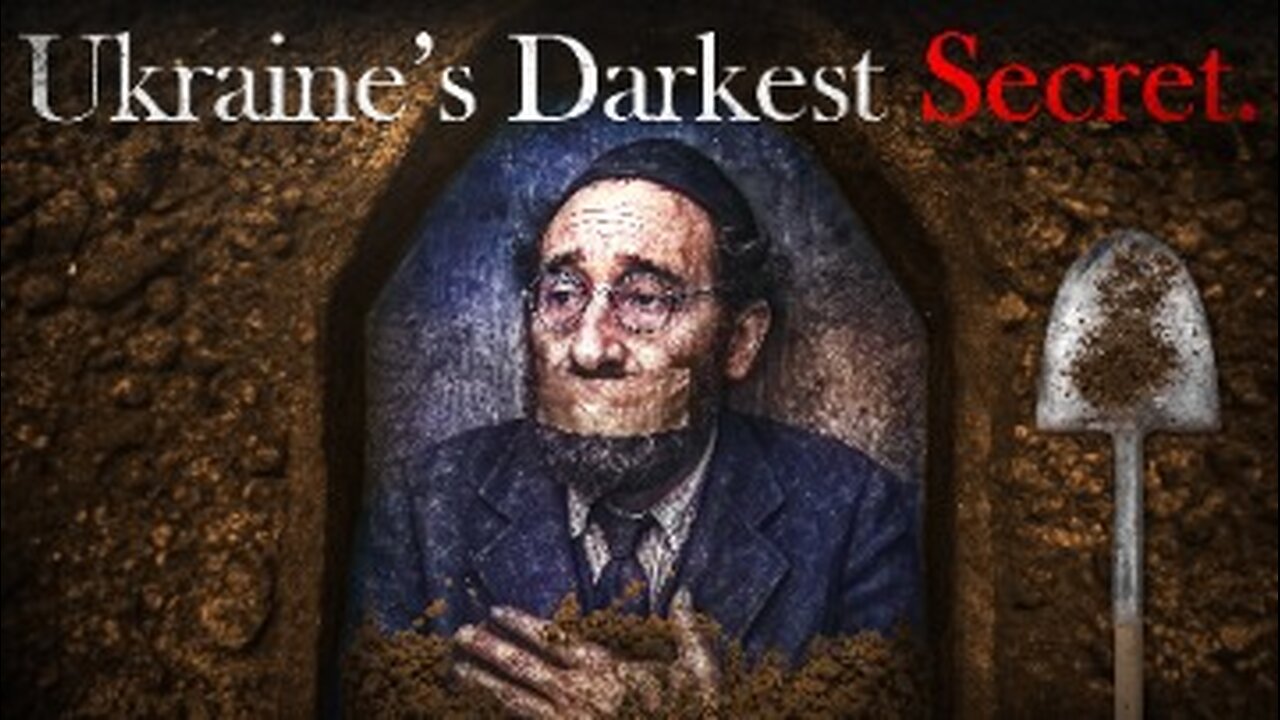Premium Only Content

The Darkest Day Of The Holocaust
The Holocaust was an endless litany of unspeakable horrors. Somewhere within that atrocious chapter of history, there would inevitably have to be one incident that stood above all others. A moment that represented the absolute pinnacle of evil amidst humanity’s darkest atrocity. That moment was the Babi Yar Massacre. For two days on September 29th and 30th, 1941, 33,771 Jews were massacred by members of the Nazi Einsatzgruppen and their Ukrainian collaborators. It was the highest concentration of death in the entire Holocaust and stands as one of, if not there, most abominable crimes in history.
Today on A Day In History, we will take you through the Babi Yar Massacre. Who perpetrated it? Why? How? And delve into its complicated legacy.
The Nazis in Kyiv
The Nazi invasion of the Soviet Union commenced on June 22nd 1941. The armies of the Third Reich took the Soviets by surprise and seized hundreds of miles of territory in mere weeks.
Accompanying the regular Wehrmacht soldiers were special units of the Einsatzgruppen. Formed during the invasion of Poland in 1939, this Einsatzgruppen had a simple mission: to achieve Hitler’s racial goals in Eastern Europe. This meant the ‘removal’ of those the Nazis deemed inferior, including Slavs, Roma Gypsies, and Jews. This could mean physical relocation, but too often it meant immediate execution. Never numbering more than a few thousand men at a time, fresh soldiers were regularly rotated in and out of the Einsatzgruppen as German leaders found that the scale of murder they were asked to commit might break even the most devout of the Nazi frontline soldiers. In the first 9 months of Operation Barbarossa, the Einsatzgruppen claimed around half a million lives.
The Ukraininan capital of Kyiv fell to the invaders on September 19th 1941. Most of the population had fled the city already, especially the Jews who knew to expect mistreatment at Nazi hands. Around 35,000 Jews remained in the city when Nazi forces assumed control. Immediately, the Nazis set about destroying Communist and pro-Soviet elements, destroying major buildings and executing captured Soviet leaders. Episodes of sabotage were recorded in the days after the city’s capture, which the Nazis blamed in large part of the city’s Jewish population. As one report noted:
“Jews played a preeminent part. Allegedly 150,000 Jews living here… Verification of these statements has not been possible yet… Execution of at least 50,000 Jews is anticipated.”
This pretext formed part of the basis for what came next, but really there was no future in which the Jews of Kyiv would be left unharmed. The Third Reich’s racial ideology already called for the elimination of its declared racial enemies, and linking the Jews of Kyiv with sabotage was ultimately inconsequential. The Nazis had no shortage of other self-justifying excuses.
Within days of the capture of Kyiv, leading officers of Army Group South met to discuss the fate of the city’s Jews. Major General Kurt Eberhard and SS-Obergruppenführer Friedrich Jeckeln, who had already directed the murder of hundreds of thousands of people on the Eastern Front, directed their subordinates to do the same to the Jewish population of Kyiv. The grisly duty fell to the Einsatzgruppen under the command of SS-Brigadierfuhrer Otto Rasch and SS-Standartenfuhrer Paul Blobel, with support from local Ukrainian collaborationist police forces.
The Round-Up
On September 27th, word was sent out to the Jews of the city hat they were being resettled. They had to report to a designated meeting point at 7am on September 29th for deportation. Those who refused to appear would be shot.
Most knew that the Nazis hated Jews, but the exact nature and depth of that hatred was not fully understood by most. Soviet authorities had suppressed information about Nazi treatment of Jews between 1939 and 1941 to avoid causing any issues with the relationship they’d built with the Nazi-Soviet Pact of 1939. Still, most of the Jew of Kyiv would have at least heard that the Nazis spoke about the forced resettlement of Jews, and so would not automatically suspect they were going to be killed. The assembly point was near the Lukyanova train station too, which helped convince Jews that this really was a deportation. The truth of the scale of the murder the Nazis could and would commit was not obvious to the people living through it, as it is to us in retrospect.
So, over 30,000 of Kiev’s Jews obeyed the order to assemble, convinced they were only about to suffer the ordeal of deportation. “The Jews still believed to the very last moment,” one German report said, “that indeed all that was happening was that they were being resettled.” The miserable crowd could only bring what they could carry in their arms or on their backs, or in small wagons that they had to pull behind them. Children came, laden with sacks of clothes, toys, and food. Families carried their most treasured possessions under their arms. They came with what little they could, what they believed would be the scraps upon which they’d have to build new lives wherever the Nazis put them.
#babiyar #holocaust #ukraine
-
 16:28
16:28
A Day In History
1 year ago $0.04 earnedThe Unspeakable Things That Happened To Christians In Japan
6082 -
 2:59:48
2:59:48
Wendy Bell Radio
8 hours agoSunday, Bloody Sunday
113K245 -
 1:10:02
1:10:02
crgoodw1n
2 hours agoHAPPY LABOR DAY! Tactical shoosting W/ @BenderOdoyle Ask about !12hr !freshenup !discord
7.67K2 -
 LIVE
LIVE
ENEMYOFDEATH2012
14 hours agoGod of War Playthrough Pt. 2 and some Fortnite
19 watching -
 4:47:50
4:47:50
The Why Files
3 days agoCOMPILATION: UFOs and Aliens Vol.2 | They are NOT our friends
92.2K54 -
 1:33:46
1:33:46
BubbaMatt
3 hours ago $0.08 earnedMafia Definitive Edition Playthrough - Part 1
3.13K -
 LIVE
LIVE
Jorba4
2 hours ago🔴Live-Jorba4- The Finals
4 watching -
 LIVE
LIVE
Lofi Girl
2 years agoSynthwave Radio 🌌 - beats to chill/game to
236 watching -
 7:05:46
7:05:46
FyrBorne
16 hours ago🔴Warzone M&K Sniping: Finding Season 5's Best Strafe ARs
25.3K -
 54:47
54:47
Side Scrollers Podcast
2 days agoSide Scroller Presents KING OF THE KART | MASSIVE MARIO KART TOURNAMENT
156K10